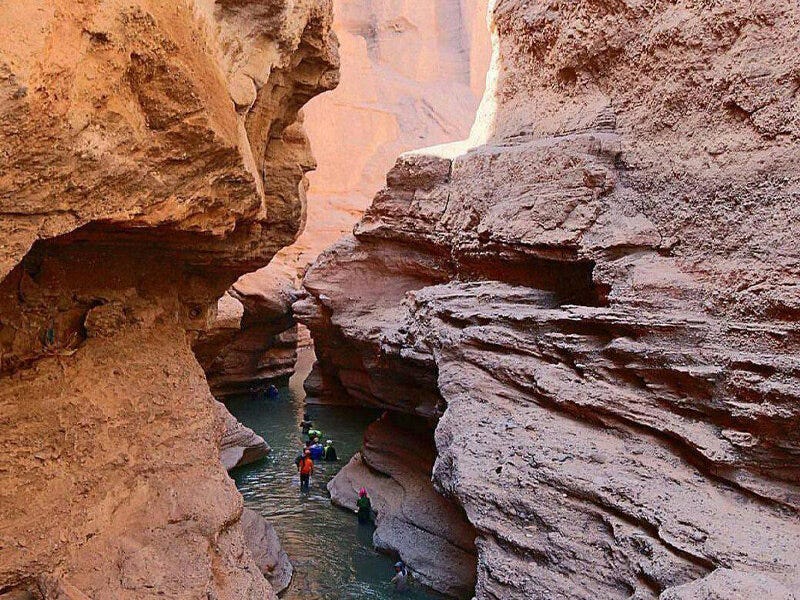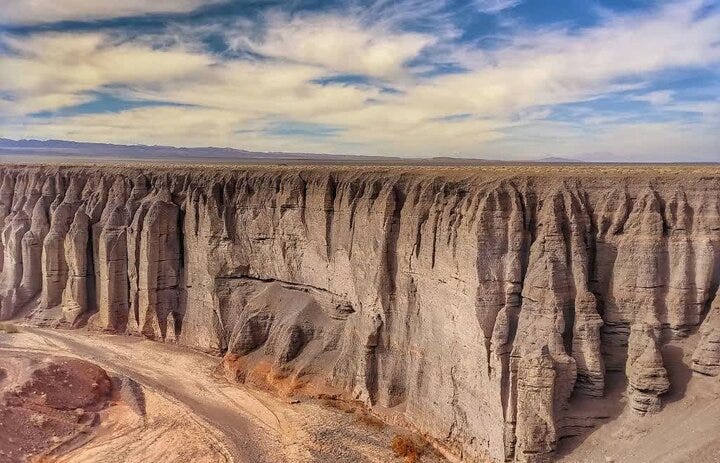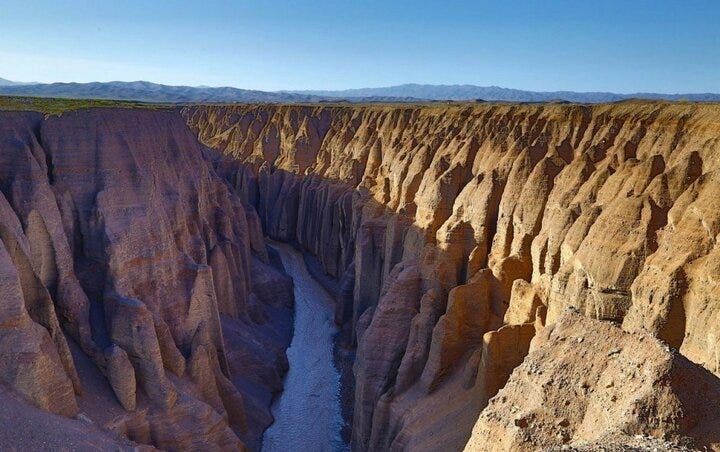A Pilgrim’s Reflection: Rageh Canyon—Nature’s Majesty Near Rafsanjan
An invitation to travellers to witness Iran’s sacred earth in its raw beauty, where stone whispers history, sky speaks divinity, and every journey becomes a remembrance
Nestled just 20 kilometres southeast of Rafsanjan in Kerman Province, Rageh Canyon unfolds as a natural sanctuary—one that, beyond its geological splendour, becomes a space for reflection and connection for the soul.
A Landscape Written by Time
For millennia, the Guivdary River has sculpted this canyon’s soft sedimentary layers—cutting, carving, leaving behind towering cliffs, sinuous ridges, natural arches, and pinnacles. The canyon stretches for around 20 kilometres, plunging up to 70 metres deep in places—each layer, each curve, an inscription of time and nature.
Light, Shadow, and the Beauty that Transcends
From early morning’s first light to the warm glow of late afternoon, the canyon walls catch sun and shade in ways that mesmerise. The interplay of light and darkness here is more than a photographer’s dream—it is a reminder of contrast in life: the hardship and ease, the shadows and the light. And at night, under the vast desert sky, the heavens reveal themselves—stars, the Milky Way, constellations intact—untouched by city glare.
A Quiet Wilderness for the Spirit
Walking the canyon floor, when the seasonal river flows, you’ll find pockets of green amid the arid surroundings. The sound of wind, the rustle of birds, perhaps even a glimpse of desert wildlife—these are moments of tranquillity. The solitude of wide horizons invites reflection, a chance to feel small under something vast and old—reminding that one’s journey in faith is both intimate and universal.
Creation’s Lessons in Stone and Sky
For those drawn to natural wonders as metaphors of faith, Rageh Canyon offers much: patience as the river carves stone; strength in the pillars; humility under the open sky. The strata in the cliffs tell of floods and eras long past, of geological upheavals and calm—echoes of upheaval and peace in human lives.
Travel Guidance—Respecting Beauty and Self
Journey with someone who knows the land; local guides help not only with routes but with stories.
Be well-equipped: sturdy shoes, sun protection, clean water, and respect for where nature is vulnerable.
Avoid the canyon during storms or heavy rains—flash floods and falling rocks make risk real.
Reserve overnight stays ahead, or plan for eco-lodging nearby.
Why It Matters to Shia Journeys
To walk through Rageh Canyon is to witness creation in its elemental form—less mediated by human artifice. It offers space for reflection on Allah’s signs, on the endurance of what is built slowly; on beauty born of struggle. For pilgrims who travel to honour Imams, to reflect on sacrifice, or seek inspiration, places like this—raw, quiet, vast—can become thresholds of spiritual renewal.
Combining Earth and Heritage
Rafsanjan itself is known not just for its natural surroundings, but for its living culture: pistachio orchards, ancient sites, local ways of life carried forward. A visit to Rageh Canyon can be woven into a pilgrimage that appreciates both earth and human heritage—nature’s classroom and humanity’s tapestry.
May your footsteps in places like Rageh Canyon carry both the awe of creation and the whisper of worship.






